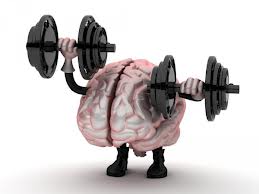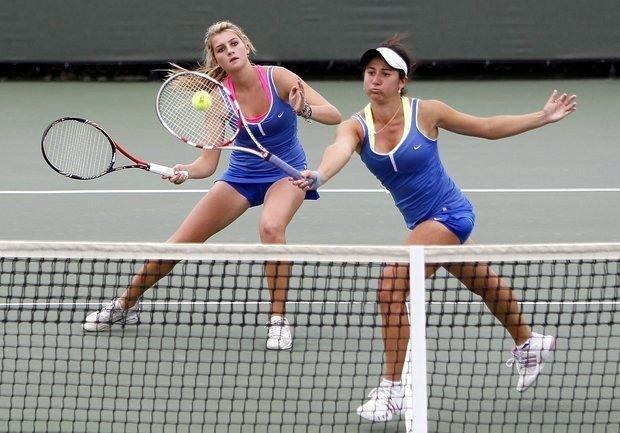Unstable surface training should be banished from the strength and conditioning world. I mean truly banished, never to be seen again! Physical therapy and athletic training - fine, but a strength coach or personal trainer trying to make an athlete stronger and more powerful – NO! Get your feet on solid ground and stop prescribing exercises. PLEASE!
Unstable surface training and baseball? Not quite. Let;s look at one of the world’s greatest surfers – Kelly Slater. Would he go for a run with hopes of having better balance on his board? Obviously not. He will spend most of his time training in the water, because this is the surface that he will be competing on. Besides board sports like surfing, snowboarding or skateborading, there is never really a time when an athlete is on an unstable surface. I’ve heard the argument for trail running, however if you look at most trails, 99% of the trail is in dirt, not on rocks that could potentially wobble under your feet. If that is the case, your glutes will be firing to create stability, protecting both your ankles and knees.
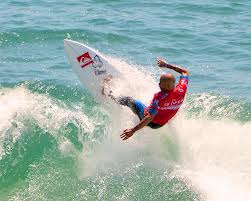
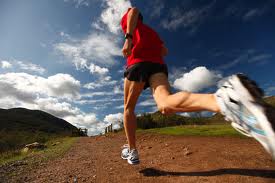
So how does the world’s best surfer relate to baseball performance? It comes down to specificity, a key strength and conditioning concept that gets lost in the prehab/rehab world. I once had a Pilate’s instructor tell me that none of his baseball players have ever been hurt. I congratulated him, and asked if he made them better baseball players. End of conversation.
There are too many athletes wasting their time trying to balance on a Bosu or swiss ball. Sure, some people think it’s impressive when an athlete can stand on a swiss ball (insert picture). But athlete’s time is limited and their time should be spent under a bar or working with dumbbells. They should be actually doing exercises to make them better baseball players, improving power within their hips, restoring mobility and stability to joints, getting their shoulders back in order, or correcting imbalances that will eventually lead to injury.
What's the literature say?
Literature over the past 10 years highly favors training on stable surfaces over unstable surface training when the goal of the exercise program is to improve strength, power, agility, and speed. For example a squat jump had greater muscle activity of the vastus lateralis, hamstrings, and erectors, than an isometric squat on a bosu ball. McBride went on to say an isometric squat has the potential to reduce risk of ACL injuries, however the muscle activity was so low that it would also prevent adaptations to resistance training. A similar study on college students compared maximal force production during a deadlift on stable and unstable surfaces. As you could guess, there was a greater amount of force production on the stable surface when compared to the unstable surface. This study also found greater maximal voluntary contraction of core musculature during a stable dead lift compared to the unstable.
Now what does the literature say about the affect of unstable surface training on elite athletes? A study conducted by Eric Cressey implemented a 10-week lower body resistance training program for female elite soccer players. They examined the affect of resistance training on vertical jump and broad jumps, 40 yard sprint, pro agility, and 10 yard sprint. After 10 weeks, the stable group had significantly improved 40 yard and jumping tests more than the unstable group. The stable group also had greater improvement in the 10 yard sprint and pro agility; however it was not significant. In another study on elite female soccer players, the unstable surface group actually had a higher greater amount of major injuries, including 4 of the 5 ACL tears the team suffered during the season, compared to the control stable surface group.
The four studies mentioned above are a few of many that show greater improvements in athletic performance of healthy individuals following stable surface training compared to unstable. Now, this doesn’t mean unstable surface training has no purpose. It has been shown to be effective in the physical therapy and athletic training world, improving ankle and knee stability immediately following injury.
What's this all mean?
Athletes train with a purpose. Therefore those working with athletes should train them with their purpose in mind. Time and again you see people suffering from the “hard” workouts. Harder isn’t always better! Any personal trainer can put you through a hard workout – just see how many burpies you can do in 30 minutes and you should recognize the value of scientific-driven programming.
Throwing a baseball and swinging a baseball bat creates a lot of rotational force. In order to properly handle the force you generate and decrease your chance of injury, or to increase the amount of force you generate. You need to continually work with greater force, training your body to with stand it while simultaneously improving your ability to create force. Think about the literature just presented to you. It should be clear that reps completed on an unstable surface will decrease the amount of load you can place onto your body. Ultimately this will slow your progress. In some cases the load can be so small that it does produce any sort of adaptation to improve your performance.
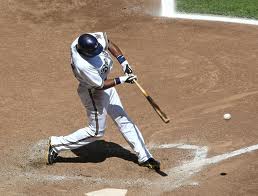
Can you truly justify unstable surface training? I’m talking besides the common, because “it’s harder” or “I need better balance” or even worse to “improve core strength”. If you have a legitimate reason, then go for it. Eric Cressey has mentioned having his baseball players doing dumbbell chest press on a swiss ball to limit the amount of load in the shoulder while still maintaining high EMG rating. Perfect reason, especially when dealing with ball players that can’t perform without a healthy shoulder!
That doesn’t mean this doesn’t come without risk. A player from the Carolina Panthers was performing dumbbell press on the swiss ball, and as you could guess he was using some heavy dumbbells. The weight of the dumbbells plus his body weight caused the ball to pop underneath him, causing him to fracture his ulna! Be smart!
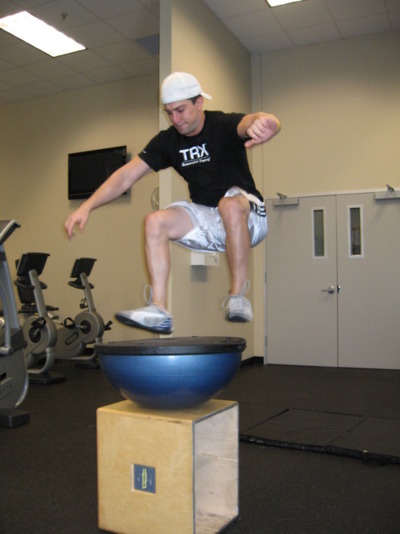
Now, if your goal is to be a better baseball player get your feet off the ball, get them on the floor, and start training the right way. You only have so much time to get some juice behind the ball, power behind your bat, and your body moving properly before your next season rolls around. Use your time wisely. If you find yourself training on a BOSU or Swiss ball, stop and ask yourself how this compares to baseball. If you or your strength coach can justify the reason, then have at it. But realize that training time should be deliberate and 99% of the time you could be doing something better. Train with your brain. Harder is not always better!
